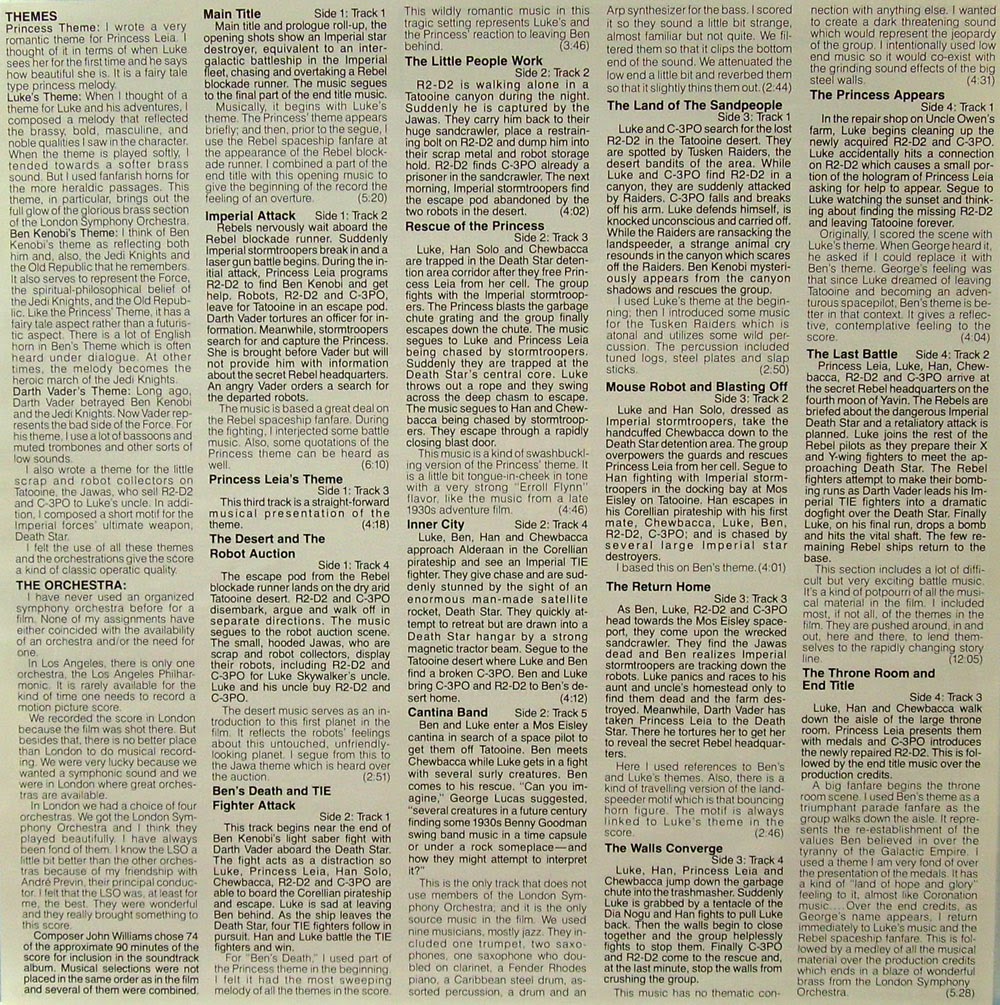I didn't yet know who Wagner was, and had no idea what a leitmotif might be, but when Williams explained how many of the major characters had their own short theme that could be 'quoted' as needed within the score, I started to get the idea. I listened to that soundtrack just about every chance I got, and when I got to see Star Wars again probably a year later in the theater (as home video wasn't even a glimmer in anyone's eye in 1978), I paid just about as much attention to what I was hearing as to what I was seeing. When we first meet Luke Skywalker, the realization that we were hearing the brilliant opening fanfare played softer and slower was like an epiphany to me, and I was hooked. Listening to the soundtrack would now let me see scenes of my favourite movie played over again in my mind's eye, provided I had access to the record player.
Film music and soundtracks have continued to expose me to new sounds and ideas, from the punk rock of Repo Man to the bluegrass of O Brother Where Art Thou?, but it was listening to Yo Yo Ma on Crouching Tiger, Hidden Dragon that first got me to appreciate a specific instrument in the cello.
The skillful blending of Eastern/Western styles and instrumentation make the Crouching Tiger soundtrack a standout by just about any measure, but the amazing range and versatility of the cello, combined with its borderline supernatural ability to elicit an almost visceral and emotional response in the listener really captivated me, and I have made a point of listening for it in symphonic music ever since. On occasion, Fenya's choir will be accompanied by one, and the opening notes of "God Bless the Master" now provoke an unconscious declaration by myself that, yes, actually, my allergies have been acting up lately, and my eyes will probably start leaking at any moment now, but this is hardly unexpected by those who travel in our circles.
Recently, a "You Might Also Like" e-mail from Amazon.ca made me aware that the Finnish cello group Apocalyptica, a band who gained notoriety by moving from period music to covers of songs by noted heavy metal musicians Metallica, had a 'Best Of' album on sale. Now, I would by no means consider myself a Metallica fan, but find their musicianship and longevity easy to respect, and also own a bluegrass cover of their anti-war song "One" which I consider to be fairly excellent. Having heard Apocalyptica a few times on CJSR and CBC, I decided to take a gamble on this 2006 release.
And I am very glad I did. The album contains both instrumental works and tracks with vocals (including a stunning cover of Rammstein's "Seemann" with Nina Hagen!), and the handful of tracks I recognized sounded fantastic in this new instrumentation and arrangement. The one that most caught my ear, however, was a cover of Metallica's "Harmageddon", itself an instrumental which I had never heard before.
The vividness and range of the sonic spectrum used in this piece is something I find altogether compelling and dramatic; it is the kind of music that makes me wonder what kind of short film could be made to accompany it. To say nothing of the musicianship of making four comparatively ancient stringed instruments sound convincingly similar to a hard rock quartet.
Obviously this kind of juxtaposition is hardly a new idea, even when taken to such extremes. After showing the Harmageddon video to my friends, they immediately introduced me to another video featuring a duo called 2 Cellos covering AC/DC's "Thunderstruck" that is making the rounds, and is quite clever.
And once again, I am left gobsmacked at not only the musical inventiveness of the artists, but the versatility of this particular instrument. Given the cello's ability to sound like a violin and bass (among other things!), I find myself wondering why orchestras even bother with other strings, but I am certain that is only a layman's ignorance at work.
Best of all though, some artists are going full circle and bringing rock/roll sensibilities to the symphonic music that attracted me to the genre in the first place. Now, to be fair, The Piano Guys here do use a lot of multi-track and backing instruments that some may consider cheating, but in the end, it is still a new way to enjoy an established instrument and freshen up a sound that, to my 10-year-old ears at least, sounded new and old at the same time when I first heard it all those years ago.


No comments:
Post a Comment